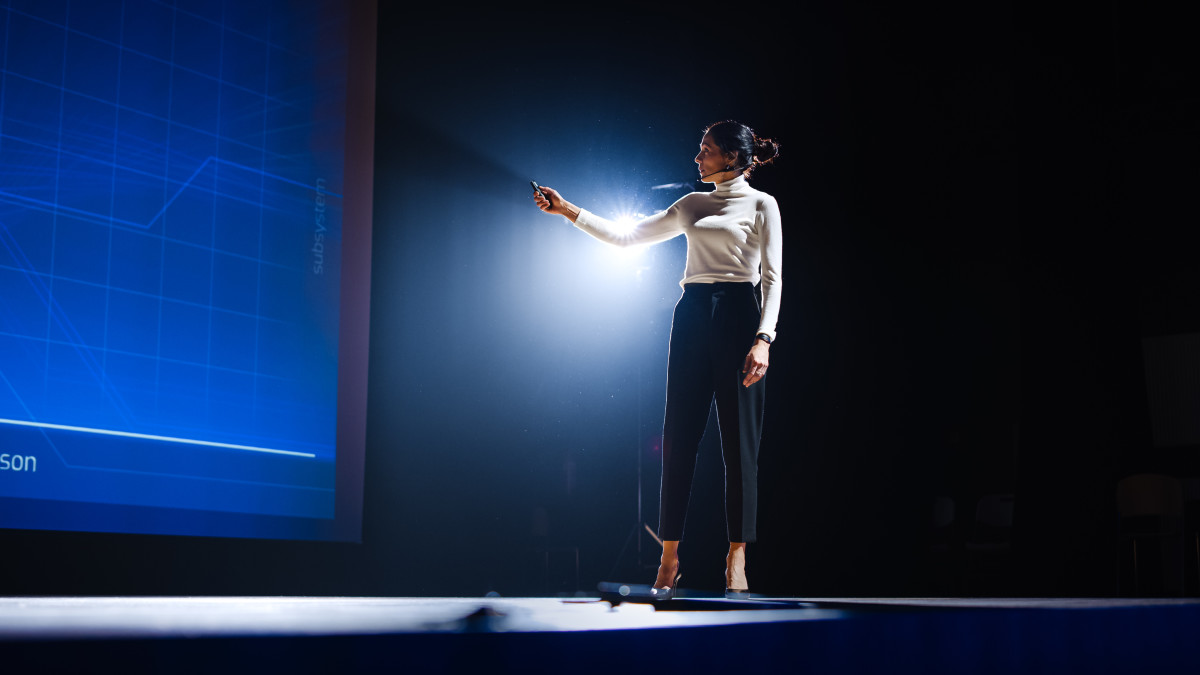
What can we learn about the future of innovation from products announced at CES?
Like the rest of the world, last week I followed CES — the annual, not-so-humbly self-proclaimed “most influential tech event in the world.” Partly I follow CES for my own gadget lust, but partly I do so because it’s a great barometer of innovation’s direction. If you look beyond the annual improvements to TVs, laptops, and displays, what’s announced at CES tells us a lot about where companies are targeting their innovation efforts.
Below are five themes from this year’s show worth tracking.
CES 2022 Trends:
1. AI & Machine Learning
This year’s CES saw countless artificial intelligence (AI) and machine learning implementations, from AI for visual impairment aids (OrCam) to AI for drone navigation (Skidoo), AI for voice interface (Fluent.ai), AI for autonomous driving retrofit kits (Perrone Labs), even self-driving tractors (John Deere).
Two things stood out in particular: First, this year saw a heavy emphasis on mobility-focused AI that extended beyond driverless cars; a good example is Hyundai’s modular “mobility platform” designed to move anything, from luggage to medical devices or worktables. Second, the ubiquity of AI at the show made it apparent that AI is the new “smart.” Case in point: Instead of smart washing machines, this year Samsung showed off a washing machine that uses AI to learn your wash preferences.
2. AR, VR, and XR
There were _a lot_ of augmented- and virtual-reality products announced this year. TCL announced its Leiniao XR glasses; Panasonic launched VR goggles with Steam; LG showed off an immersive stationary bicycle experience powered not by VR goggles but by large displays; and Sony announced Playstation VR 2. Otto also launched its Air Glass in December, right before CES.
To be fair, this is not a new space. What stood out this year, though, was the shrinking of the technology’s physical footprint. This is most evident in Mojo Vision’s fitting a microLED display into a contact lens to provide an AR overlay. As the technology continues to shrink, I expect its applications will only grow.
3. Metaverse Everywhere
As could have been predicted, there was a metaverse for mobility (CYVision), a metaverse for beauty (Perfect Corp), a new metaverse top-level internet domain, and a “bespoke metaverse experience where the opportunities for brands are limitless” (Wunderman Thompson).
As with AI, the number of companies looking to jump on the metaverse bandwagon will only grow. Beyond its ubiquity, though, what stood out was the number of devices intended to help us engage more realistically in the metaverse when it arrives. Shiftall’s Pebble Feel, a wearable device that provides the sensation of heat or cold, and Owo’s electrode-infused sensory vest are two examples.
Footnote: That said, my favorite assessments of the metaverse come from @MatthewGunson (“Metaverse is CES porn.”) and @VRNima (“Saying your company is building a metaverse means as much as a pet store calling their fish Pokémon.”)
4. Healthtech
Health tech made a strong showing. Abbot, for example, showed an arm patch wearable that measures biometrics like glucose levels and (eventually) blood-alcohol levels. We also saw neural interface earbuds (Wiser), at-home urine analysis kits (Vivoo), an Oura ring competitor that measures blood pressure (Movano), a light-therapy device (CareWear), and even lightbulbs that monitor your vital signs and sleep patterns (Sengled).
What stood out most about health tech was the continued push towards quantified health. New electric toothbrushes won’t just help you brush your teeth better, for example, they’ll show you how many minutes you brushed. It suggested our collective appetite for data about our personal health has not yet been sated.
The product I found most intriguing this year was also in the health space: Israeli startup DeepOptics unveiled a pair of adaptive glasses that switch from sunglasses to reading glasses on demand. As a life-long glasses wearer, the prospect of adjustable prescriptions is appealing. (Imagine going to the optometrist, getting a new prescription, and updating your glasses to that new prescription immediately.)
5. Electric Vehicles
Finally, it seemed almost every traditional automaker took the opportunity to announce or preview upcoming electric vehicles. Cadillac showed its InnerSpace concept coupe; Chevy revealed its Silverado truck EV; Chrysler previewed its Airflow concept sedan; Mercedes-Benz previewed its EQXX concept sedan; and BMW announced not one but two new iX vehicle models.
From an innovation opportunity standpoint, what stood out were not the electric vehicles themselves—we knew these were coming—but the ecosystem implications of a growing number of EVs. As we continue to migrate towards an electric vehicle future, we’ll likely see more and more complementary innovations. The electric vehicles previewed this year also illustrate the convergence among innovation trends. (Chevy’s new Silverado EV, as one example, is not just an electric vehicle but an application of AI to autonomous driving.) Mashup areas like these are typically particularly fertile ground for innovation.
Did you follow CES this year? It’s a big show; if you saw trends I’ve missed, reach out to us at marketing@credera.com or connect with me on LinkedIn.
Contact Us
Let's talk!
We're ready to help turn your biggest challenges into your biggest advantages.
Searching for a new career?
View job openings



